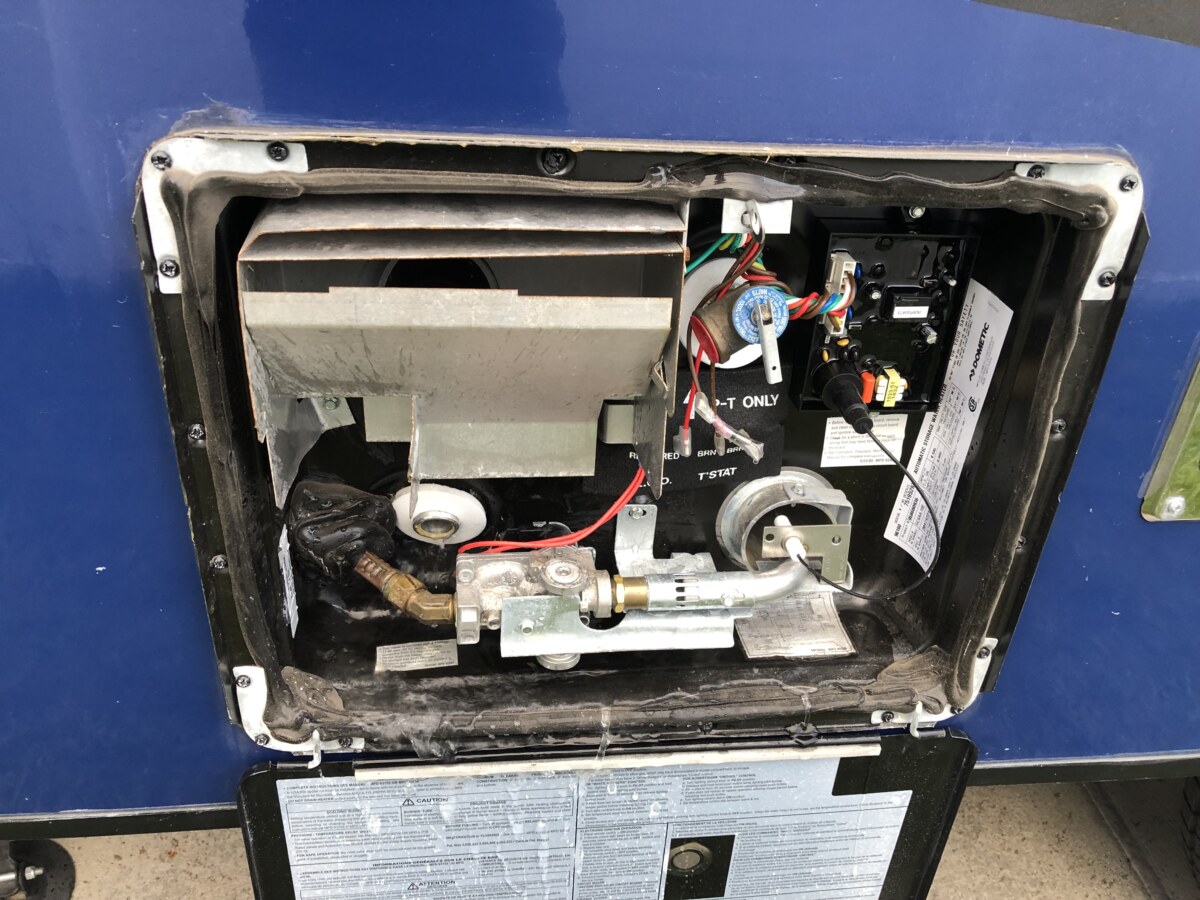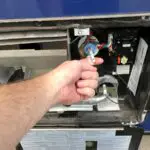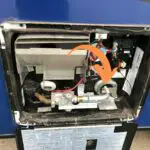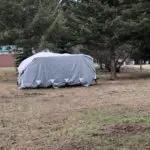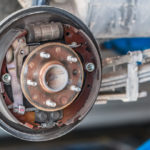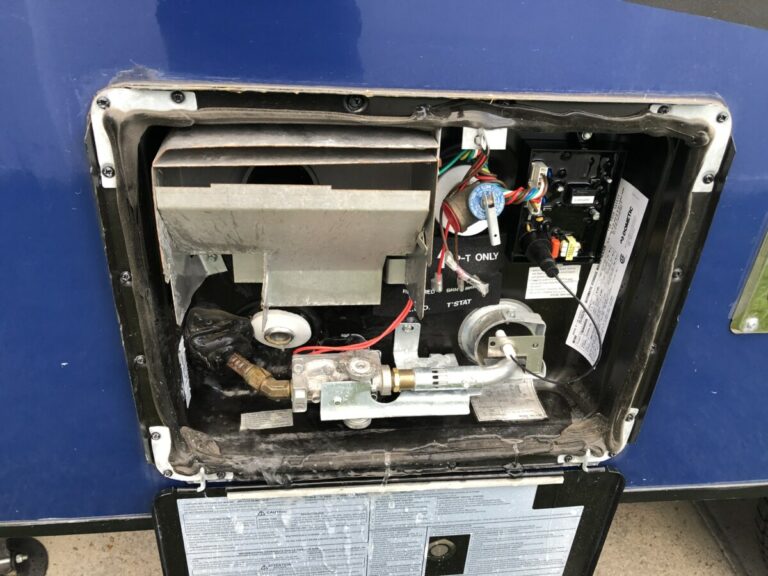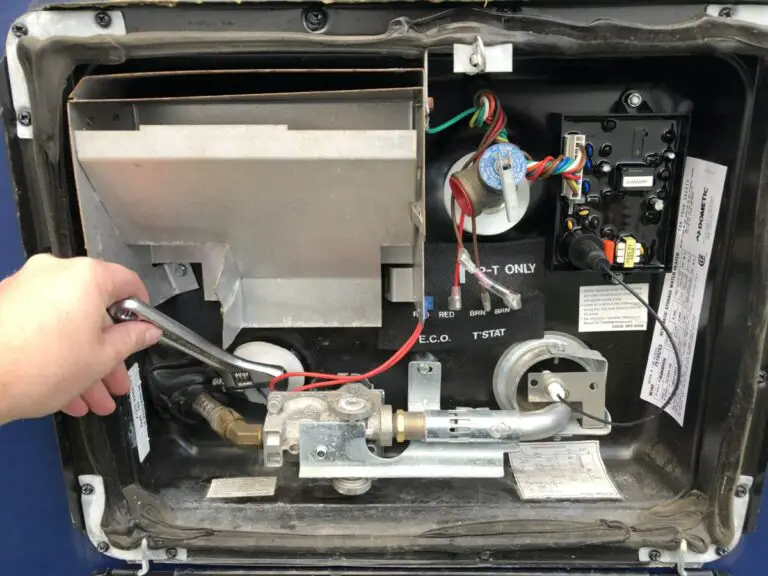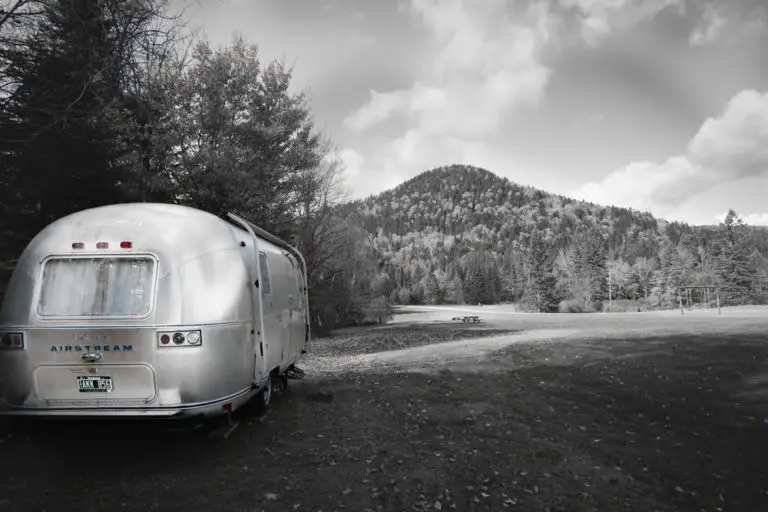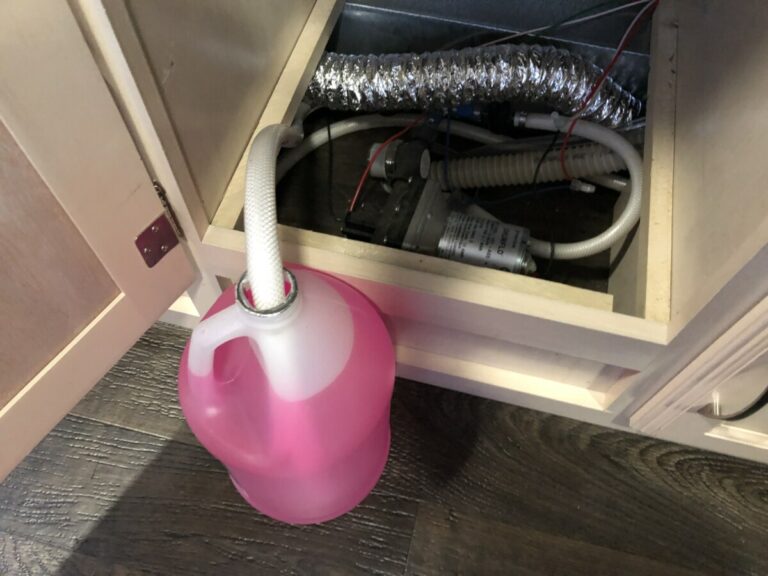How To Test RV Hot Water Heater Igniter: A Simple Step-By-Step Guide
Some RV water heaters have a dual heating system that heats the water with either electricity or gas, and other water heating systems heat the water with gas alone. The gas portion of the water heating system has an igniter that gives a spark to ignite the gas when you open a hot water tap. Sometimes the electrical heating part works fine, but the gas does not because the RVs igniter is faulty.
The easiest way to test an RV hot water heater igniter is to turn your tank on gas/propane operation mode and listen to see if there is a clicking sound. Alternatively, there would be a visual spark you can see. If you don’t observe a click or spark, try sanding it with high grit sandpaper.
It is best to know how the RVs water heater igniter functions to get a better breakdown of how to test it. Testing if your RVs ignitor is faulty is easy; for the most part, you can test all the relevant places yourself. If you have a little technical skill, this should be easy; otherwise, it is best to get the help of an RV technician.
Testing The Igniter Of An RV Water Heater in 3 Steps:
Before you fiddle with the water heating system, ensure you have the correct information, guidelines, and tools to assist you with the test. The igniter gets power from the main breaker box to generate a spark and ignite the gas, so the testing will involve a few points to test.
Step 1: Access The Water Heater
To test the RVs water heater ignitor, you must get access to the water heater. Most RVs water heaters are easily accessible, and it should be as simple as opening the protection cover to get to it. Some covers need a screwdriver to open it, and others work with a latch, but in either case, you need to open it before you can test the ignitor.
Step 2: Use An Assistant To Test The Ignitor
To test the ignitor, you will need some assistance from someone to activate the igniter while you see if it works. Here are three steps to see if the igniter makes a spark:
- Find the igniter and ensure that you have a good visual of the whole igniter.
- Ask your assistant to activate the ignitor by turning it on and off while you listen to hear a spark sound. The ignitor must make a “klick” sound.
- If there is a click sound, focus on the tip where the flame should be and see if it flashes (spark) when the ignitor is activated.
Step 3: Test The Voltage Of The Ignitor
If the ignitor has a “click” sound but does not have a spark, the ignitor most likely is fine, and it is an electrical issue. The ignitor needs voltage to create a spark, and if the ignitor wiring is faulty, the ignitor will not work to light the gas. Here are steps to test the voltage of the ignitor:
- Trace the wire from the ignitor to the circuit board. It should lead you to the circuit board supplying the ignitor with power.
- Unplug the ignitor plug that is secured to the circuit board. After unplugging the ignitor, the circuit board should expose a single connector (lug).
- Set your multimeter to Volts and place the red probe against the circuit board lug (connector). Ensure the probe makes a good connection with the metal of the lug.
- Take the multimeter’s black probe and push it against the metal casing to provide proper ground.
- Ask your assistant to activate the ignitor and see if there is a voltage reading.
- If the multimeter reads about 12 volts, the ignitor receives a current to generate a spark. If there is no voltage from the circuit board, lug it is most likely the circuit board and not the ignitor.
- There is a 2-amp fuse above the ignitor plug inside the circuit board, and it should be visible. Check to see if the fuse is broken, and if it is, replace it with a new one and test the ignitor again.
The fuse works as a failsafe, and if it is intact and working, plus you get voltage from the circuit board to the ignitor, then the ignitor is faulty, and you will need either remove and clean it or replace it. Be careful when you remove the ignitor to clean it, and it is best if you let an RV technician remove it and have it professionally cleaned.
Fundamentals of RV Hot Water Heater Igniters
Understanding RV Water Heaters
Your RV’s hot water heater is a vital system, designed to provide hot water for showers, washing dishes, and other activities. Usual types of RV water heaters you would encounter are propane, electrical, and hybrid. It’s essential to comprehend how they work, so you can keep them in good condition and troubleshoot problems effectively.
A propane water heater employs a propane burner to heat the water, regulated by a thermostat. An electric water heater uses an electric heating element and a thermostat, while a hybrid water heater combines both propane and electric systems to give you more options and flexibility in your RV.
Components of a Water Heater Igniter
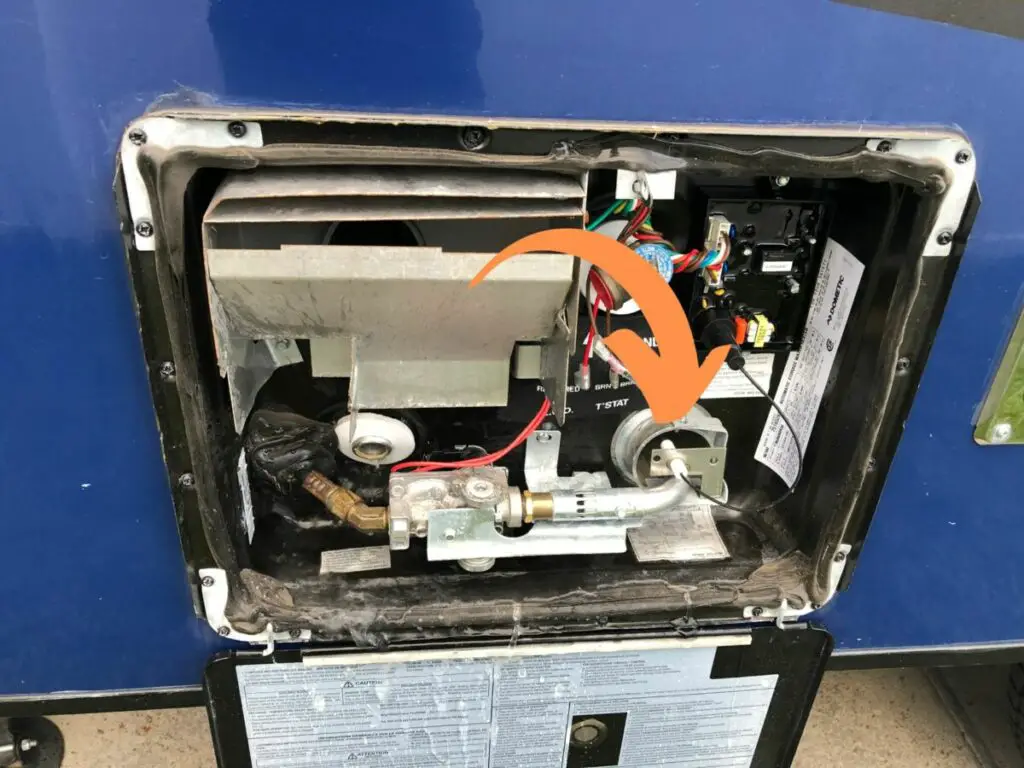
A critical component in your RV’s hot water heater is the igniter, which is responsible for ensuring that your propane burner or electrical heating element ignites or activates. For propane water heaters, the igniter provides a spark to ignite the propane gas, and in electric water heaters, the igniter serves as a switch, turning the heating element on or off. There are a few essential components to be aware of:
- Flame sensor: This device detects the presence of a flame in a propane water heater and communicates the information back to the control board. If the flame goes out, the sensor signals the igniter to reignite the burner.
- Control board: This component receives input from the flame sensor and controls the igniter, ensuring the burner or heating element turns on when needed.
- Igniter electrode: In a propane water heater, this part generates a spark, igniting the propane gas. In an electric water heater, this would be a switch controlling the heating element.
- High limit switch: Ensuring safety, this part shuts off the heating element or burner if it detects temperatures nearing a dangerous threshold.
Once you have a basic understanding of RV water heaters and the critical components of a water heater igniter, you’re better equipped to test and troubleshoot your system when problems arise. Remember to always adhere to safety guidelines and consult the manufacturer’s instructions when working on your RV’s hot water heater.
Issues with the Igniter
Common RV Hot Water Heater Igniter Problems
There are several issues that might affect your RV hot water heater igniter. Some common problems include:
- Loose wiring connections: Over time, vibrations while driving can cause the wiring connections to become loose, affecting the igniter’s performance. Check the connections and ensure they are securely fastened.
- Faulty igniter: If your igniter isn’t producing a spark, it may be faulty or damaged. You may need to replace it.
- Debris in the burn chamber: Sometimes, debris can clog the burn chamber, affecting the igniter’s functionality. Clean the burn chamber and remove any debris.
- Gas supply issues: Low or no gas pressure can prevent the igniter from working correctly. Ensure your propane tanks have sufficient fuel and check for any potential gas leaks.
Signs of a Failing Igniter
Be aware of the following symptoms, which might indicate that your RV hot water heater igniter is on the verge of failing:
- Delayed ignition: If your heater takes a long time to ignite when turning on the hot water, it might be a sign the igniter is failing.
- Intermittent firing: Your RV hot water heater randomly fires on and off. This is a clear indication of a faulty igniter.
- No Ignition: Your RV’s hot water heater doesn’t heat up, and the igniter fails to produce a spark, indicating a possible failure.
- Weak spark: If you notice that the igniter is producing a weak spark, it might be losing its ability to ignite the gas and may need replacement.
Remember to troubleshoot these issues systematically. Confirm that there is sufficient gas, check for loose connections, clean the burn chamber, and, if needed, replace the faulty igniter. By addressing these concerns, you will enhance the performance and longevity of your RV’s hot water heater system.
Performing Initial Checks on your RV Hot Water Heater Ignitor
Inspecting the Heater for Damage
Before testing the RV hot water heater igniter, it’s important to perform some initial checks. Start by inspecting the heater for any visible damage. Check for any cracks, dents, or corrosion. It’s crucial to address any damages before proceeding, as they can impact the efficiency and safety of your RV hot water heater.
Examining the Circuit Board and Connections
Next, you should examine the circuit board and connections. Make sure your RV’s power is turned off and the circuit breaker for the hot water heater is switched off. Disconnect any power sources to ensure safety during inspection.
- Check the wires for any signs of wear, fraying, or loose connections. Replace or repair damaged wires as necessary.
- Inspect the connections on the circuit board by ensuring they are clean, unobstructed, and securely fastened.
- Ensure that your Atwood RV hot water heater has a clear, uninterrupted power supply.
After completing these initial checks, you can move forward with testing the RV hot water heater igniter, confident that your heater is in proper working order.
Testing and Troubleshooting the Igniter
Using a Multimeter to Test Wires and Connections
To test the RV hot water heater igniter, begin by using a multimeter. First, turn off the power supply to the water heater and make sure it is cool before opening the access panel. Set your multimeter to the resistance (ohms) setting, and disconnect the wires from the igniter. Place the multimeter probes on the terminals of the igniter and check the reading. A normal reading ranges between 40 to 90 ohms. If it falls outside of this range, it indicates that the igniter needs replacement.
Inspect the wires and connections for any signs of damage or corrosion. Clean any corroded connections and replace damaged wires as needed. Afterward, reattach the wires to the igniter and restore power to the water heater.
Examining the Sparking Process
Next, examine the sparking process of the RV hot water heater igniter. With the access panel open, ask someone to turn the water heater ignition switch on while you observe the igniter. You should see a bright blue spark between the igniter and burner assembly. If the spark appears weak or yellow, it indicates that the igniter may be faulty and in need of replacement.
Don’t get your head too close just incase the water heater ignites and there is some flames that come out of the burner chamber.
Common Solutions to RV Hot Water Heater Igniter Problems
Inspect the Fuses and Circuit Breaker
If you encounter problems with your RV hot water heater igniter, start by checking the fuses and circuit breaker. Ensure that the fuses are appropriately sized, not blown, and replaced if necessary. Verify that the circuit breaker is working correctly and is reset if tripped.
Replacing or Repairing Damaged Parts
Sometimes, the issue may arise from damaged or faulty parts, such as the coil or thermocouple. Inspect these parts for visible signs of damage or wear. If the coil shows cracks, burns, or other damage, it will likely need replacement. Similarly, if the thermocouple appears corroded or soiled, it may need cleaning or a replacement.
If there is a lot of soot on your igniter, use some fine grit sandpaper or denim jeans if in a pinch to lightly brush off any soot that may be preventing the igniter from working.
Resolving Issues with Gas Supply
Proper gas supply is crucial for your heater to function correctly. Check that your propane gas tank is full and that the gas regulator is functioning correctly. Make sure the gas valve is open and the lines are free of any obstructions or leaks.
By following these steps, you should be able to address most RV hot water heater igniter problems effectively. Always consult your owner’s manual and consider seeking assistance from professional technicians if needed.
Frequently Asked Questions
What are the steps to troubleshoot an RV water heater igniter?
To troubleshoot your RV water heater igniter, follow these steps:
- Safety first: Turn off the gas supply and disconnect any electrical connections to the water heater.
- Visual inspection: Look for any obvious signs of damage or wear, such as disconnected wires, loose connections, or cracks in the igniter.
- Check the ignition system: Turn the gas supply back on and try to ignite the water heater. Listen for the sparking sound and observe the igniter’s tip for a spark. If there’s no spark, the igniter may be faulty.
- Test the igniter unit: Remove the igniter from the water heater and connect it to a 12V DC power source. If it sparks when powered, the problem may lie elsewhere, such as a faulty thermostat or control board.
- Examine the gas valve: Ensure the gas valve is opening when the igniter is activated, allowing gas to flow to the burner.
How can I determine if my RV hot water heater igniter is faulty?
Determine if your RV hot water heater igniter is faulty by:
- Listening for a spark: During the ignition process, listen for a consistent sparking sound. If there’s no sound, it could indicate a problem with the igniter.
- Observing the spark: Visually check the igniter’s tip for a spark during ignition. If there is no visible spark, the igniter may be defective.
- Testing the igniter: Remove the igniter, connect it to a 12V DC power source, and see if it sparks when powered. If not, the igniter is likely faulty and needs replacement.
Remember to follow safety precautions during troubleshooting, such as turning off the gas supply and disconnecting the electrical connections before working on the igniter or water heater.
Be the first to be notified about FREE tips, hints, coupon codes, and email-exclusive information. All for FREE!

